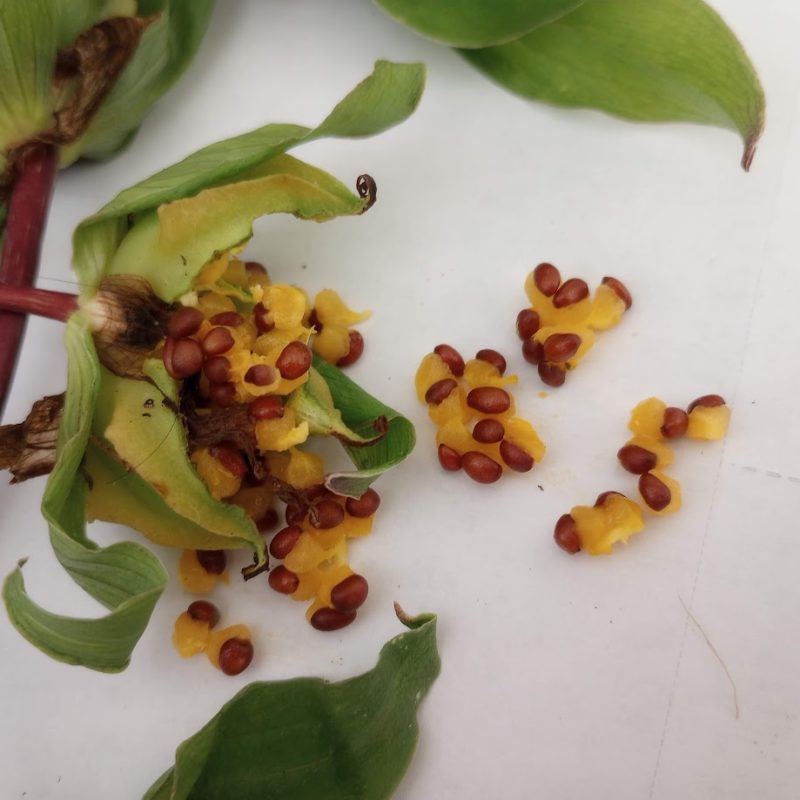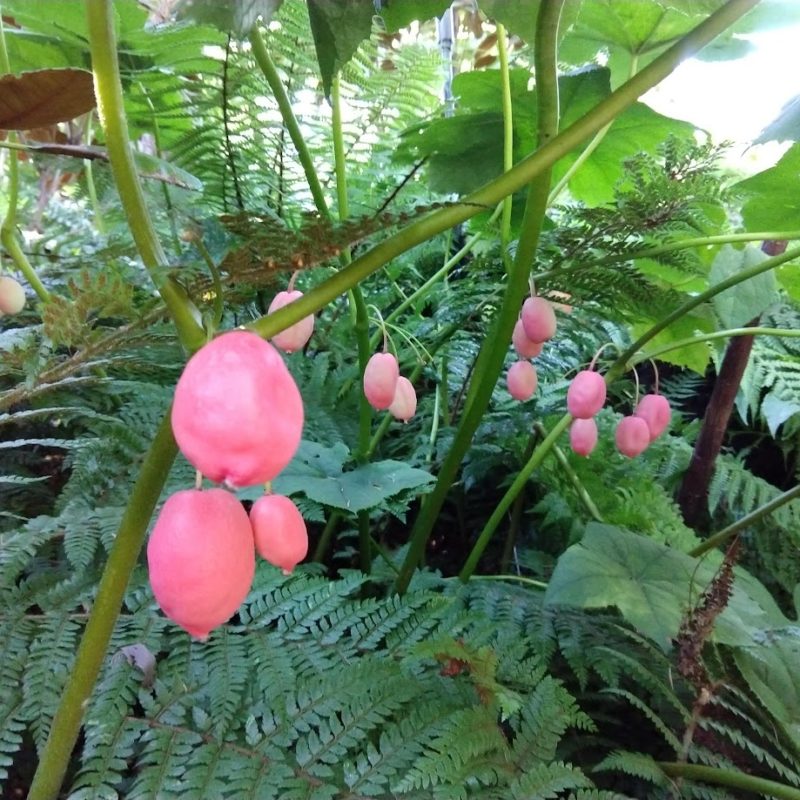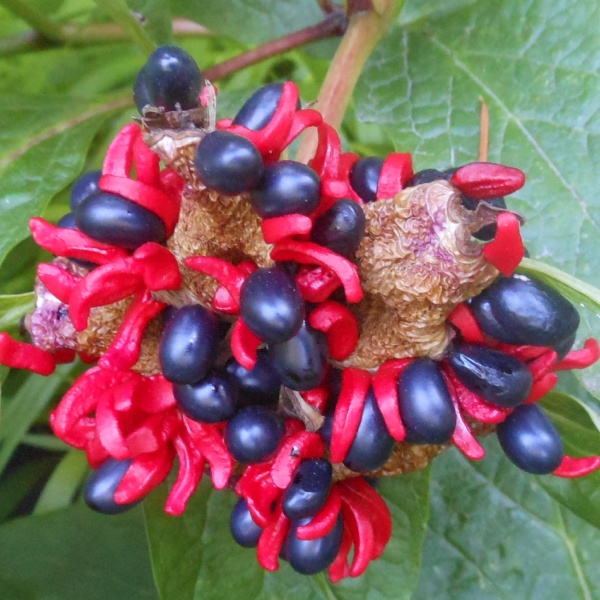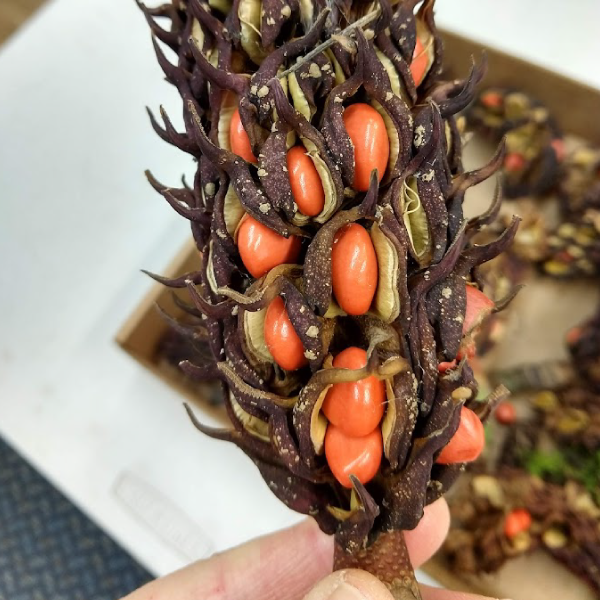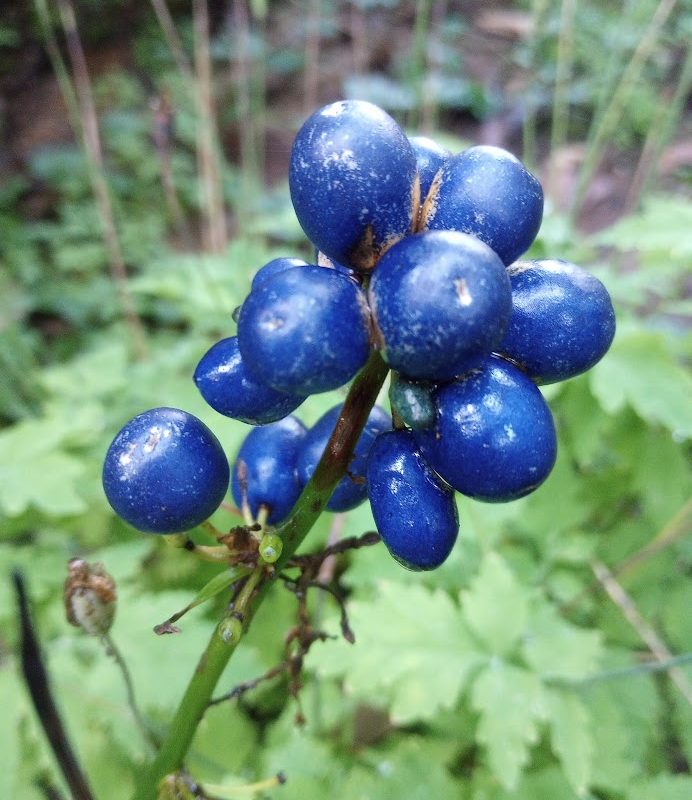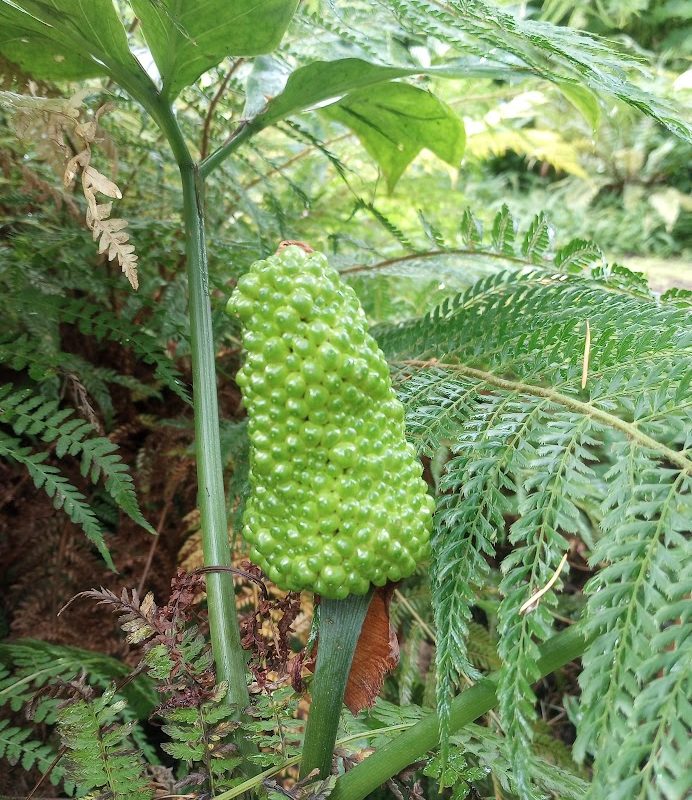Story and photos by RSBG Nursery Manager & Assistant Curator, Atsuko Gibson
While our nursery specializes in species Rhododendron, we also propagate “companion plants” — the term we use for our non-rhododendron collection. We focus on plants that grow naturally alongside rhododendrons in the wild, as well as many other genera within the Ericaceae, the blueberry/rhododendron family. These plants are propagated both sexually (seeds) and vegetatively (cuttings or divisions), but in this article I would like to introduce a little about how some of these plants are propagated by seeds.
We started harvesting seeds from some of our companion plants in the garden in mid-July. There are many native Trillium ovatum clumps throughout the garden, and their seeds were just sown. Trillium seeds do not like to dry out, so fresh sowing is the key for success. They are extremely slow growing from seeds, and I don’t expect them to be ready for sale for at least another 5-6 years. Their seeds contain a fleshy structure called elaiosome, which attracts ants, and this is how they are spread in nature. This woodland perennial is a highly sought after item among our visitors in early spring.
We also just harvested seeds of Paeonia mairei. This is a peony that was introduced into cultivation in 1995 by our own Steve Hootman, our director and a modern-day plant hunter. Their shiny black seeds are artfully packed within a bright red fleshy structure. This peony tolerates shady woodland conditions, unlike most other peonies (not to mention the 5 inch flowers!).
Clintonia andrewsiana is a California native that spreads slowly in light shade. Their lily-like pink flowers in spring are followed by a striking midnight-blue berries when they ripen in mid-summer. The common name for this plant is aptly ‘Western Bluebead Lily’. This plant also takes many years from seed to a saleable specimen.
Podophyllum aurantiocaule is an Asian mayapple from the Eastern Himalaya. Growing much like other species of Podophyllum, it bears white hanging flowers in spring followed by bright pink fruits. Inside these fruits are small black seeds that nestle among a jelly-like substance. It is a shame that we don’t leave these fruits for display purposes! But sorry, we harvest every single fruit that we can find for propagation purposes. If you are at the garden at the right time in the summer, you might witness the beauty of the pink “apples” before our horticulture staffs collect them.
When magnolia seeds start to ripen in mid-October, we will be on a patrol to pick up fallen seed cones every day. While we would like to harvest magnolia seeds for propagation purposes (especially Japanese big-leaf species M. obovata), these fragrant cones full of wax-coated seeds are a favorite of many small woodland creatures such as squirrels, mice, and voles as well as our native Pileated Woodpecker. If we are lucky enough to harvest them, these orange M&M-look-alike seeds are cleaned by removing the waxy orange coating to expose the black seeds.
Later in autumn, we will look out for the ripening of Arisaema sikokianum, Japanese Jack-in-the-pulpit. The conical green cone of fleshy seeds are sometimes as tall as 5 inches and they look very much like a short ear of corn. When ripened, this “corn” turns a bright scarlet color, making it easy to spot in the garden. Each “kernel” holds a round cream-colored seed. When you clean Arisaema seeds, be sure to put on gloves as the seeds contain a chemical that makes your fingertips numb. They will germinate easily but take at least 5 years to produce blooming size corms.
Once the seeds mentioned above are cleaned, they are sown in a well-drained bark/peat mix. Each pot is topped with a thin layer of chicken grit or small pebbles, which will help reduce the growth of moss and liverworts. Some seeds require a cold treatment (Stratification), so research prior to sowing is highly necessary. With patience, you will be able to increase the number of these plants that are difficult to find in other nurseries.
One piece of advice…do not leave seeds that resemble M&Ms and blueberries on the lunchroom table! One must be very careful not to eat these seeds by mistake.
- Trillium ovatum seeds
- Podophyllum aurantiacaule seedpods
- Paeonia mairei
- Magnolia seeds
- Clintonia seeds
- Arisaema sikokianum unripen seedpod

